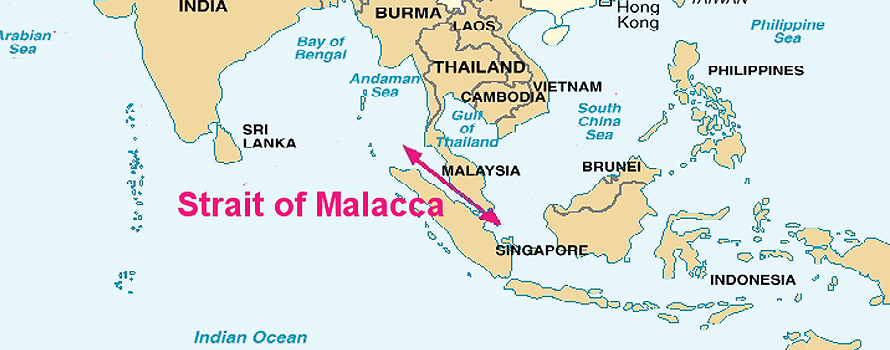Ruta de navegación
Blogs
Entries with label malacca .
The well-trodden step, decisive in the strategies of both countries to counter each other
A thermometer to measure the future pulse of forces between China and India will be the Strait of Malacca, a passage through the Strait of Malay core topic for the connection between the northern Indian Ocean and the Asia-Pacific region. India is responding to the further expansion of Chinese maritime interests, which force Beijing to pay close attention to Malacca, by advancing positions towards the western mouth of the strait.

▲Map of the Indo-Pacific [US DoD]
article / Alejandro Puigrefagut [English version]
Sea routes are the basis of trade and communication between more than 80% of the world's countries. This fact makes the natural geographical location of States of great strategic importance. A particularly important point for maritime traffic is the Strait of Malacca. core topic for the trade of the most populous region on the planet.
The Strait of Malacca, which links the South China Sea with the Burma Sea on its way to the Bay of Bengal, is the world's busiest commercial passage and is therefore a strategic location. This corridor , which surrounds the western coast of the Malay Peninsula and the Indonesian island of Sumatra, is used by approximately 60% of the world's maritime trade, exceeding one hundred and fifty ships per day, and is the main oil supply route for two of Asia's main consumers: the People's Republic of China and Japan. This geographical point is core topic for the entire Indo-Pacific region, ensuring the free movement of ships is strategic. That is why many states in the region, including China and the United States, see the need to protect this passage in order to be able to supply themselves, export their goods and not be blocked by the control of a third country over this area.
In relation to China, it is not easy to think that a blockade of its supply due to problems in the Strait of Malacca will happen. For this to happen, an armed conflict of extraordinary dimensions would have to be generated, propitiating this blockade by a subject that could control – and potentially interrupt – the passage to the other countries of the region. This potential risk, which today can only be generated by the U.S. Navy, forces China to be vigilant and have to develop sufficient military capabilities to protect what it considers its territories in the South China Sea and, by extension, the supply of vital resources that must necessarily pass through the Strait of Malacca.
 |
The Asian giant's positions and presence in the South China Sea and in the areas adjacent to the Strait of Malacca have increased in recent years, with the aim of increasing its influence over the states of the region. Moreover, in order to defend its supplies of oil and natural gas (from the Persian Gulf), China has extended its presence to the Indian Ocean, although this is not enough. The reality is that in this area there is a large skill between two of the most influential Asian powers in the region: China and India. Due to the growing presence and influence of the People's Republic in the Indian Ocean, India has been forced to take proactive measures to improve peace and stability in the region, mobilizing and expanding its presence from its east coast to the vicinity of the Strait, in order to rebalance the regional balance of power. In this way, India can dominate the western access to the Strait and, consequently, have a longer reaction time to manoeuvre in the Indian Ocean as well as in the Strait itself and even access the waters of the South China Sea more quickly.
At the same time, India's growing approach to the South China Sea is watched with concern in Beijing, and some analysts even see India as a threat in the hypothetical case of a war between the two regional powers and India blocks the Strait and, therefore, China's access to certain raw materials and other resources. For this reason, China has conducted a number of joint military exercises with third States in the Strait of Malacca over the past three years, especially with Malaysia. During the first exercises in the area, the Ministry of Defense of the People's Republic of China concluded that bilateral relations with Malaysia were strengthened in terms of security and defense cooperation and that the joint response capability to security threats was "increased." In addition, for China, the protection of the Strait is a priority because of its great strategic value and because countries such as the United States are a key factor in the protection of the Strait . The U.S. and Japan also want to control it.
